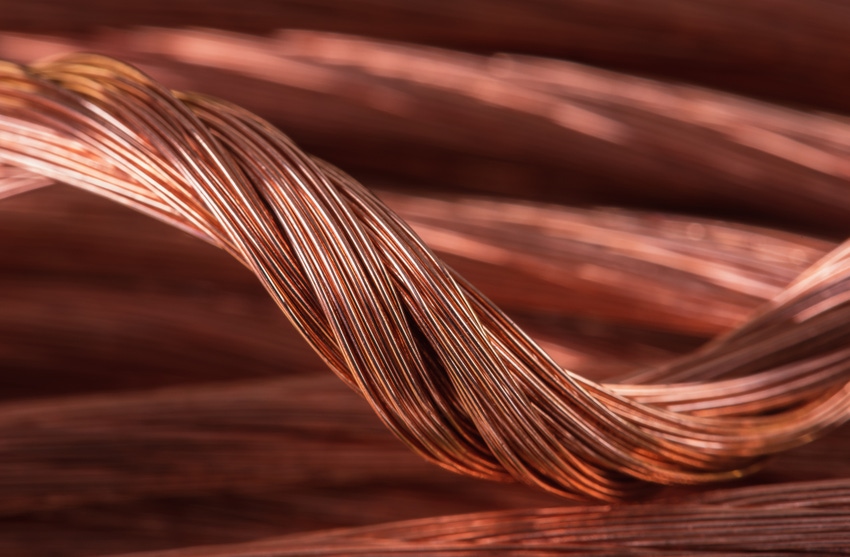Graphene Found to Boost Conductivity of Copper
In a surprising result, adding the carbon-based graphene to metal to make electrical wires resulted in significant performance enhancements.
February 1, 2024

At a Glance
- Graphene reduces the metal's temperature coefficient of resistance without decreasing electrical conductivity
- Potential use cases include wiring in electric motors and generators as well as transmission lines
Defying conventional scientific knowledge about electrical conductivity, the addition of a common carbon compound to copper to make electrical wires results in significant performance enhancements, researchers have found.
A team from the Department of Energy's Pacific Northwest National Laboratory (PNNL) added graphene, a carbon-based material to electrical-grade copper, and found that it reduces the temperature coefficient of resistance of the metal without decreasing electrical conductivity at room temperature. This results in a gain in electrical efficiency.
The temperature coefficient of resistance explains why copper wires get hot when electricity flows through them, and it's an important factor in the conductivity of a metal. If the metal gets too hot, the conductivity is typically reduced.
The findings come after several years of research by the scientists into whether metal conductivity can be increased, especially at high temperatures, by adding other materials to it. They also are "counter to what’s generally known about the behavior of metals as conductors,” said Keerti Kappagantula, a materials scientist at PNNL who worked on the research with colleagues.
"Typically, introducing additives into a metal increases its temperature coefficient of resistance, meaning they heat up faster at the same current levels compared to pure metals," she said. "We are describing a new and exciting property of this metal composite where we observe enhanced conductivity in a manufactured copper wire.”
Building on Previous Electrical Conductivity Studies
Previously, the PNNL research team had already performed detailed structural and physics-based computational studies to explain the phenomenon of how the electrical conductivity of metals could be enhanced using graphene.
In this study, they used a PNNL-patented advanced manufacturing platform called ShAPE to demonstrate that the solid-phase processing used to extrude wire—a composite copper-based material—results in a microstructure peppered with tiny flakes and clusters of graphene. The graphene may be responsible for decreasing coefficient of resistance of the composite copper material, the researchers said.
Specifically, they added 18 parts per million of graphene to electrical-grade copper, which reduced the temperature coefficient of resistance by 11 percent. This decrease did not reduce the material's electrical conductivity at room temperature, the researchers found.
“We showed that flakes and clusters must both be present to make better conductors for high-temperature operations,” Kappagantula said.
This finding is especially relevant for the manufacturing of electric vehicle (EV) motors, where an 11 percent increase in electrical conductivity of copper wire winding translates into 1 percent gain in motor efficiency, she added.
Graphene's Potential for Industrial Designs
Indeed, when applied to any industrial application, the wires made of the graphene-copper composite will provide more design flexibility, Kappagantula said. “Anywhere there's electricity, we have a use case,” she said.
An example of this is in the core of electric motors and generators, where a coiled copper wire is used. Motors today are designed to operate within a limited temperature range because when they get too hot, the electrical conductivity drops significantly. Since the composite can lower the temperature coefficient of resistance, electric motors potentially now can run at higher temperatures without losing conductivity.
Another potential use case is the transmission lines that bring electricity into homes and businesses, which are typically made of copper. Using the composite wire could provide more efficiencies as demand for power increases in cities across the world.
“This technology is a beautiful solution for copper wiring in high-density urban settings,” Kappagantula said.
The researchers published a paper on their work in Materials and Design. They plan to continue to work to customize the copper-graphene material as well as test wires made with the materials that are about the thickness of a US penny, or 1.5 millimeters.
In their experiments, they will measure other essential properties—such as strength, fatigue, corrosion, and wear resistance—that are key for use in industrial applications to test viability, the researchers said.
About the Author(s)
You May Also Like



